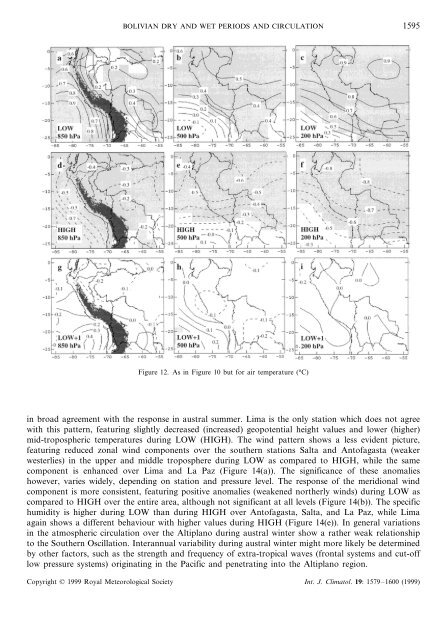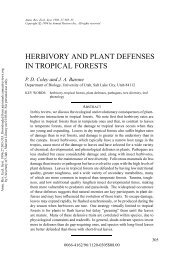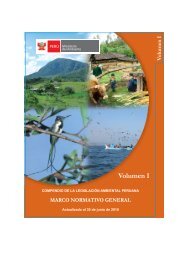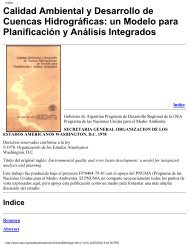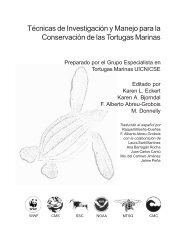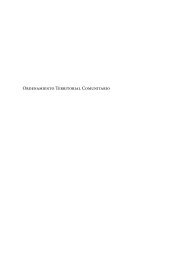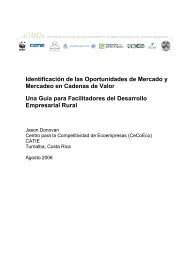Atmospheric circulation over the Bolivian Altiplano during ... - CDAM
Atmospheric circulation over the Bolivian Altiplano during ... - CDAM
Atmospheric circulation over the Bolivian Altiplano during ... - CDAM
Create successful ePaper yourself
Turn your PDF publications into a flip-book with our unique Google optimized e-Paper software.
BOLIVIAN DRY AND WET PERIODS AND CIRCULATION 1595Figure 12. As in Figure 10 but for air temperature (°C)in broad agreement with <strong>the</strong> response in austral summer. Lima is <strong>the</strong> only station which does not agreewith this pattern, featuring slightly decreased (increased) geopotential height values and lower (higher)mid-tropospheric temperatures <strong>during</strong> LOW (HIGH). The wind pattern shows a less evident picture,featuring reduced zonal wind components <strong>over</strong> <strong>the</strong> sou<strong>the</strong>rn stations Salta and Antofagasta (weakerwesterlies) in <strong>the</strong> upper and middle troposphere <strong>during</strong> LOW as compared to HIGH, while <strong>the</strong> samecomponent is enhanced <strong>over</strong> Lima and La Paz (Figure 14(a)). The significance of <strong>the</strong>se anomalieshowever, varies widely, depending on station and pressure level. The response of <strong>the</strong> meridional windcomponent is more consistent, featuring positive anomalies (weakened nor<strong>the</strong>rly winds) <strong>during</strong> LOW ascompared to HIGH <strong>over</strong> <strong>the</strong> entire area, although not significant at all levels (Figure 14(b)). The specifichumidity is higher <strong>during</strong> LOW than <strong>during</strong> HIGH <strong>over</strong> Antofagasta, Salta, and La Paz, while Limaagain shows a different behaviour with higher values <strong>during</strong> HIGH (Figure 14(e)). In general variationsin <strong>the</strong> atmospheric <strong>circulation</strong> <strong>over</strong> <strong>the</strong> <strong>Altiplano</strong> <strong>during</strong> austral winter show a ra<strong>the</strong>r weak relationshipto <strong>the</strong> Sou<strong>the</strong>rn Oscillation. Interannual variability <strong>during</strong> austral winter might more likely be determinedby o<strong>the</strong>r factors, such as <strong>the</strong> strength and frequency of extra-tropical waves (frontal systems and cut-offlow pressure systems) originating in <strong>the</strong> Pacific and penetrating into <strong>the</strong> <strong>Altiplano</strong> region.Copyright © 1999 Royal Meteorological Society Int. J. Climatol. 19: 1579–1600 (1999)


